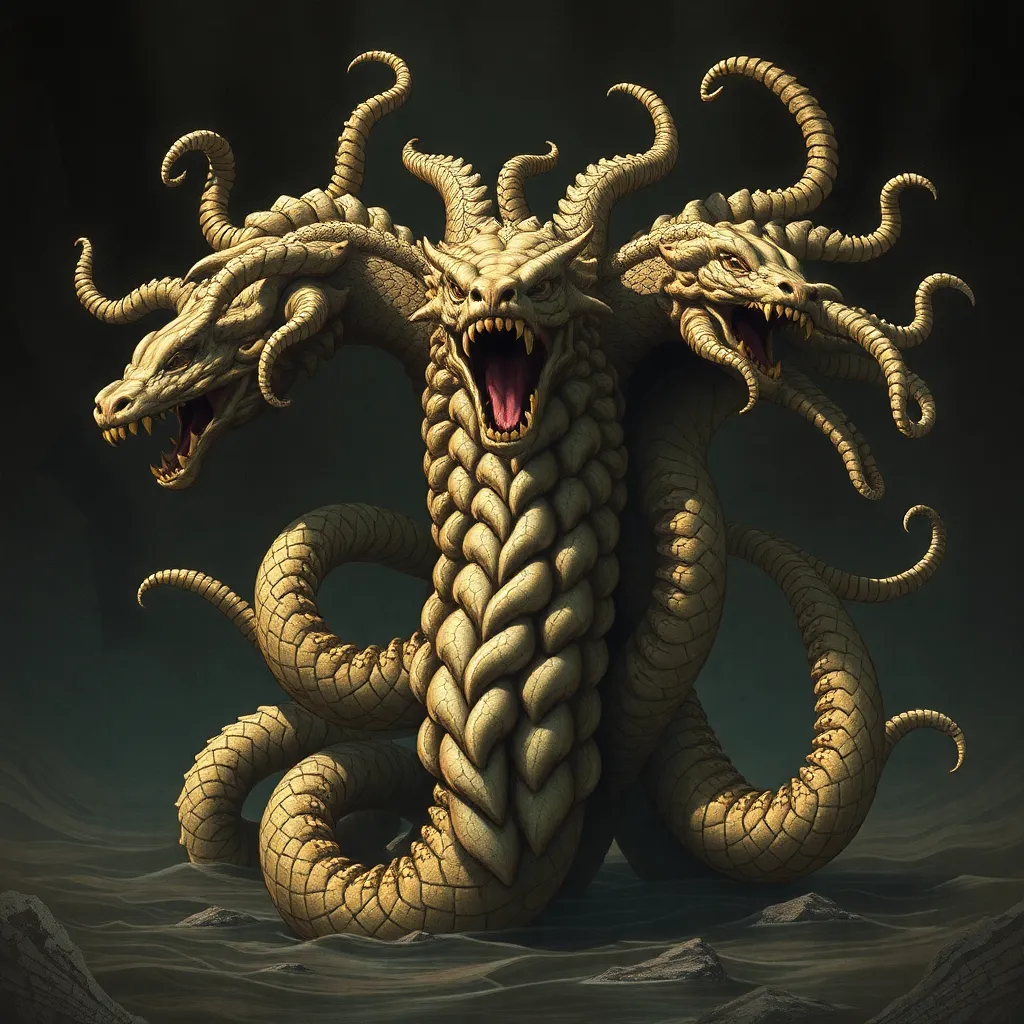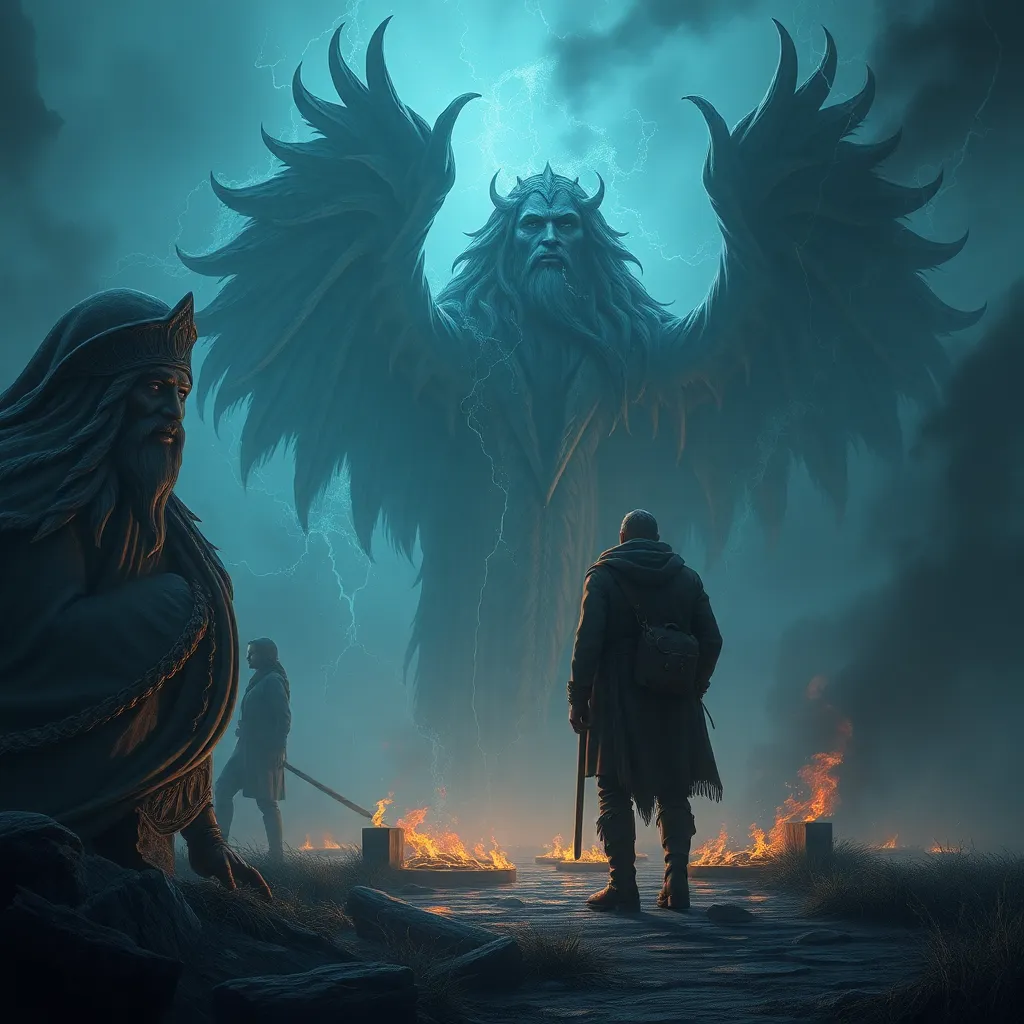The Hydra’s Many Heads: A Comparative Analysis of Greek and Roman Mythologies
I. Introduction
The Hydra, a formidable mythological creature from ancient lore, is often depicted as a serpentine beast with multiple heads that regenerate when severed. This fierce entity embodies the chaotic and often perilous nature of mythological narratives. In this article, we aim to delve into the rich tapestry of Greek and Roman mythologies, highlighting both the similarities and differences in their portrayals of the Hydra. Understanding these mythologies is crucial, as they not only reflect the values and beliefs of their respective cultures but also offer insights into human nature and the challenges we face.
II. Origins of the Hydra in Greek Mythology
The Hydra originated in Greek mythology, particularly in the context of the Twelve Labors of Heracles, where it serves as a symbol of insurmountable challenges. The creature is often described as having numerous heads—typically nine—each of which could regrow if cut off. This regenerative ability made the Hydra a formidable opponent, representing the chaotic forces of nature and the trials one must face.
In the tale of Heracles, the Hydra resides in the swamps of Lerna and is tasked as one of Heracles’ Labors. Heracles’ encounter with the Hydra is not just a battle of physical strength; it symbolizes the battle against overwhelming odds and the necessity of strategy and teamwork, as he employs his cousin Iolaus to help him burn the neck stumps to prevent regeneration.
The Hydra’s significance extends beyond mere narrative; it has been a prevalent subject in Greek culture and art. Artists often depicted the creature in various forms, emphasizing its terrifying beauty and the heroism required to confront it. The symbolism associated with the Hydra—chaos, destruction, and regeneration—echoes throughout Greek artistic achievements.
III. The Roman Adaptation of the Hydra
As the Romans encountered Greek mythology, they adopted many of its elements, including the tale of the Hydra. Roman mythology, while heavily influenced by Greek traditions, often reinterpreted these stories to reflect Roman values and ideals. In Roman texts, the Hydra is frequently depicted in a more allegorical manner, serving as a symbol of the struggles faced by the Roman state and its heroes.
The depiction of the Hydra in Roman literature often emphasizes themes of order versus chaos. While the creature remains a figure of monstrous strength, Roman adaptations highlight the ingenuity and resilience of heroes like Hercules (the Roman equivalent of Heracles) in overcoming such challenges. This reflects the Roman emphasis on practical wisdom and the importance of civic duty.
Furthermore, the influence of Roman culture brought a shift in the interpretation of the Hydra’s story, focusing more on the moral implications and the lessons learned from confronting such formidable foes.
IV. Thematic Comparisons: Heroism and Challenges
The battle between Heracles and the Hydra serves as a pivotal moment in Greek mythology that encapsulates the themes of heroism and the nature of challenges. In this narrative, Heracles exemplifies not only physical strength but also cleverness and teamwork, showcasing the multifaceted nature of heroism.
In contrast, Roman interpretations of heroism often emphasize duty and sacrifice. The story of Hercules’ encounter with the Hydra symbolizes the Roman ideals of perseverance and the necessity of overcoming chaos to restore order. This nuanced view of heroism reflects the broader cultural values of Rome, where personal achievement is often linked to the welfare of the state.
Both mythologies utilize the Hydra as a powerful symbol of overcoming challenges. However, while Greek narratives often celebrate individual heroism, Roman interpretations tend to focus on collective responsibility and moral fortitude in the face of adversity.
V. Symbolism and Moral Lessons
The Hydra serves as a potent symbol in both Greek and Roman mythologies, representing chaos and the struggle for order. In Greek mythology, the Hydra embodies the chaotic forces of nature that must be tamed. Its regenerative heads symbolize the challenges that can multiply if not addressed decisively.
From a Roman perspective, the Hydra’s symbolism extends to the moral implications of facing chaos. Romans viewed the creature not just as a beast to be slain, but as a representation of the challenges that threaten societal order. The story conveys lessons about perseverance, resilience, and the importance of confronting one’s fears and obstacles head-on.
In both mythologies, the Hydra teaches valuable lessons about the human condition—specifically, the necessity of confronting adversity and the importance of resilience in the face of overwhelming odds.
VI. Artistic Representations Across Cultures
Art has long served as a medium through which the stories of the Hydra have been told. In Greek art, depictions of the Hydra vary from vase paintings to monumental sculptures, often illustrating the dramatic moments of Heracles’ battle with the creature. These representations usually highlight the fierce struggle and the grotesque beauty of the Hydra itself.
Roman artistic interpretations, while drawing inspiration from Greek works, often place greater emphasis on the moral lessons derived from the myth. Roman reliefs and mosaics depict scenes with a more didactic approach, focusing on the valor and determination of Hercules in overcoming the Hydra as a metaphor for the Roman spirit.
The differences in artistic representations reflect the cultural contexts in which they were created. Greek art often celebrates individual heroism and the beauty of the struggle, while Roman art tends to focus on the moral implications and civic duty associated with overcoming challenges.
VII. Legacy and Modern Interpretations
The legacy of the Hydra extends far beyond ancient mythologies, having a profound impact on contemporary literature, media, and popular culture. The Hydra’s multifaceted nature has inspired countless adaptations, from films and novels to video games, where themes of overcoming chaos and personal growth are explored.
In modern narratives, the Hydra often represents internal struggles and the challenges of identity. The creature’s ability to regenerate can symbolize the persistent nature of personal demons and societal issues that seem insurmountable, making it a relevant metaphor in contemporary discussions of mental health and resilience.
Furthermore, the comparative analysis of Greek and Roman interpretations of the Hydra continues to influence modern storytelling, providing a rich tapestry of themes that resonate with audiences today. The enduring relevance of the Hydra speaks to the timeless nature of myth and its ability to convey profound truths about the human experience.
VIII. Conclusion
In conclusion, the comparative analysis of the Hydra in Greek and Roman mythologies reveals significant insights into the values and beliefs of these ancient cultures. From its origins in Greek lore to its adaptation in Roman narratives, the Hydra serves as a powerful symbol of chaos and the challenges that heroes must face.
Understanding these mythological narratives enriches our appreciation of cultural heritage and the ongoing relevance of these stories in contemporary society. The Hydra’s enduring legacy is a testament to the power of myth to shape our understanding of identity, perseverance, and the human condition.


